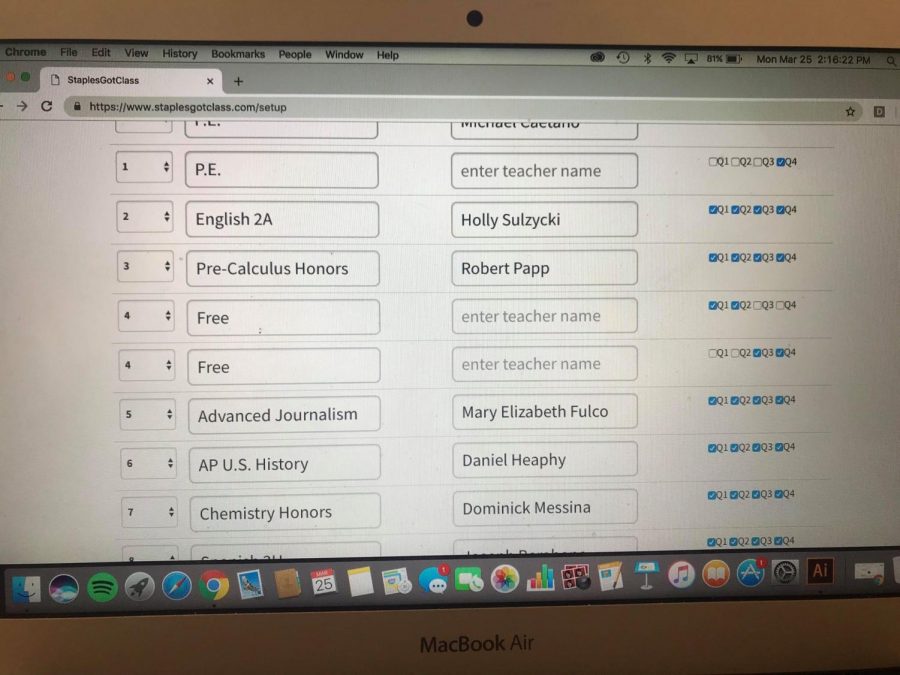New schedule determination quells anxiety and chaos
A staples student inputs their classes into a digital schedule. Students in the Staples community will benefit from not receiving teachers names or periods on their schedules because it will reduce unnecessary stress.
After cracking her knuckles and sitting down with her daughter’s schedule in front of her, she frantically types the names of next year’s teachers into RateMyTeacher.com. While reading reports on the amount of homework given, ratings on a teachers fairness and an assessment of how understanding they are, she scribbles down some notes and reports back to her daughter.
The mother fills her daughter in on the qualities—both the good and the bad—that make up each of her teachers next year. As she does, her daughter’s stomach knots and churns. She prays that she got the “easy” teacher, or the teacher that “gives the least amount of homework.” Her palms start to sweat. An uneasy feeling builds inside her. She’s anxious for the upcoming school year; however, it is only the end of May. With a month of school and finals remaining, she is resigned to nervousness regarding next year.
Students in the Staples community will benefit from not receiving teachers names or periods on their schedules because it will reduce unnecessary stress and limit chaos in the guidance department for students wanting a “schedule change” before experiencing the class.
The first thing students do when they receive their schedules is input them into iStaples. This enables them to see their peers’ classes and classmates because of the assigned periods and teachers on the printed schedule. The topic ripples through the student body:
“Did you have this teacher?”
“Was her class hard?”
“What’s the homework like?”
Last year when I got my schedule, I was hung up on one specific teacher. I had heard stories about said teacher “cold calling” on students. She was purported to prompt tears in her students. As a somewhat quiet person in class, this terrified me three months ahead of time. I felt anxious every time I walked into that subject thinking about how different it was going to be with my new teacher who was characterized as “out to get kids.” As such, I was burdened with premature and unwarranted stress due to the early release of schedules.
After getting answers to their most pertinent questions, tensions make waves among the student body if they receive an answer that they don’t like. This encourages students to schedule meetings with their guidance counselors in order to get a “better” teacher, to get a “better” free period, or to try and switch out of the dreaded lab lunch and into a period with their friends.
Guidance is then overwhelmed with conferences, which do little to solve the problem. Since there are more than 1,850 students in need of a schedule that matches their requested course, the constant hustle to get the most-liked teacher or be in a class with one’s core group of friends is simply too big of a request for the administration to fill; it is also a seemingly unnecessary request by classroom standards since students should be taking classes of interest rather than what their friends are doing or based off of who the “easiest” teacher is.
Because releasing schedule without teachers names will decrease the number of schedule change meetings with guidance and curb unnecessary, early stress, the new change will benefit both the administration and the students finishing out the current school year.

Emma Dantas ’21 decided to take Advanced Journalism two years ago “because I wanted to be a part of a community...and since I don’t play a sport...

















































